
Brodogradnja
Scope & Guideline
Pioneering Research in Mechanical Engineering and Naval Architecture
Introduction
Aims and Scopes
- Marine Propulsion and Energy Efficiency:
Research on optimizing propulsion systems and improving energy efficiency in marine vessels, including studies on fuel alternatives such as LNG and hydrogen. - Hydrodynamic Performance and Optimization:
Investigation into the hydrodynamic characteristics of vessels, including propeller performance, hull shape optimization, and resistance analysis under various conditions. - Numerical Simulations and Computational Methods:
Utilization of advanced computational fluid dynamics (CFD) and finite element analysis (FEM) for predicting vessel behavior, performance, and safety under different scenarios. - Environmental Impact and Sustainability:
Focus on reducing the environmental footprint of maritime operations, including decarbonization strategies, emissions analysis, and the integration of renewable energy sources. - Maritime Safety and Risk Management:
Studies on enhancing maritime safety through risk assessment, collision avoidance systems, and emergency resource allocation in marine operations. - Innovations in Marine Structures:
Research on the design and analysis of marine structures such as offshore platforms, underwater vehicles, and mooring systems, with a focus on durability and resilience.
Trending and Emerging
- Decarbonization and Alternative Fuels:
A significant increase in research focused on decarbonization strategies, including the use of hydrogen and LNG, indicates a shift towards sustainable practices in shipping. - Autonomous and Remote-operated Vessels:
Growing interest in the design and control of autonomous vessels, showcasing advancements in robotics and AI applications in maritime operations. - Advanced Computational Techniques:
The rise of complex computational methods, such as machine learning and AI, for predictive modeling and optimization in marine engineering demonstrates a trend towards data-driven decision-making. - Environmental Monitoring and Management:
Increased emphasis on studies addressing environmental impacts, such as sedimentation and ecological effects of marine structures, reflects a broader commitment to sustainability in maritime research. - Risk Assessment and Management in Maritime Operations:
Emerging themes related to the evaluation of operational risks and the implementation of robust decision-making frameworks for maritime safety highlight a proactive approach to risk management.
Declining or Waning
- Traditional Shipbuilding Techniques:
Research that focuses solely on conventional shipbuilding methods and materials is becoming less prevalent as the industry shifts towards more innovative, technology-driven practices. - Static Structural Analysis:
Studies that primarily address static analyses without considering dynamic or environmental factors are waning, reflecting a broader trend towards more comprehensive, real-time assessments of vessel performance. - General Maritime Economics:
Papers that discuss maritime economics in a general sense, without integration into specific engineering or technological advancements, have seen a decline as the journal emphasizes more technical contributions.
Similar Journals
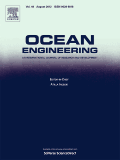
Ocean Engineering
Shaping the Future of Coastal and Marine SolutionsOcean Engineering, published by PERGAMON-ELSEVIER SCIENCE LTD, is a prestigious peer-reviewed journal that has been at the forefront of marine sciences since its inception in 1968. With an impressive impact factor and recognition in the Q1 quartile of both Environmental Engineering and Ocean Engineering, it stands as a key resource for researchers, professionals, and students alike. This journal focuses on a wide range of topics relevant to the field, including coastal engineering, marine resource management, and ocean dynamics, aiming to bridge theoretical research and practical applications. As ranked 14th in Ocean Engineering according to Scopus, it reflects the influential contributions of its articles and provides a platform for innovative discoveries that advance the field. Although not open-access, it offers diverse subscription options for accessing cutting-edge research. The journal’s ongoing legacy of publishing high-quality research continues to contribute significantly to the advancement of knowledge in ocean-related engineering disciplines.
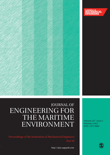
Proceedings of the Institution of Mechanical Engineers Part M-Journal of Engineering for the Maritime Environment
Exploring Sustainable Solutions for Ocean ChallengesProceedings of the Institution of Mechanical Engineers Part M - Journal of Engineering for the Maritime Environment, published by SAGE Publications Ltd, is a leading scholarly journal that addresses critical advancements in the field of maritime engineering. With an ISSN of 1475-0902 and an E-ISSN of 2041-3084, this journal serves as an essential platform for researchers and practitioners alike, disseminating original research, reviews, and case studies relevant to mechanical and ocean engineering. Recognized for its rigorous peer-review process, it currently holds a commendable Q2 ranking in both Mechanical Engineering and Ocean Engineering. The journal's reputation is bolstered by its strategic emphasis on innovative practices and sustainability in maritime environments. By providing a valuable resource for interdisciplinary collaboration, the journal facilitates the intersection of technology and engineering solutions critical for the evolving challenges within the maritime sector. Researchers, professionals, and students alike will find this journal instrumental in keeping abreast of the latest developments, best practices, and future directions in maritime engineering.

AIRCRAFT ENGINEERING AND AEROSPACE TECHNOLOGY
Innovating the skies with high-quality research.AIRCRAFT ENGINEERING AND AEROSPACE TECHNOLOGY, published by Emerald Group Publishing Ltd, is a leading peer-reviewed journal dedicated to advancing the fields of aerospace engineering and technology. With a strong emphasis on innovative research, the journal aims to bridge theoretical developments and practical applications within the aerospace sector. Although the journal does not currently offer open access, it continues to enrich the academic community's understanding of aircraft design, maintenance, and engineering processes, making it a crucial resource for researchers, professionals, and students alike. By fostering a rigorous dialogue among experts, AIRCRAFT ENGINEERING AND AEROSPACE TECHNOLOGY ensures the dissemination of cutting-edge findings and promotes sustainable practices in the aerospace industry, highlighted by its commitment to high-quality scholarship.

Ocean Systems Engineering-An International Journal
Driving Progress in Automotive and Ocean Engineering ResearchOcean Systems Engineering - An International Journal, published by TECHNO-PRESS, is a pivotal platform for the dissemination of cutting-edge research in the fields of Automotive Engineering, Mechanical Engineering, Ocean Engineering, and Water Science and Technology. With its ISSN 2093-6702 and E-ISSN 2093-677X, the journal serves as a key resource for scholars and practitioners alike, offering insights into innovative solutions and advancements within these disciplines. Operating under a Q3 ranking in several categories including Automotive and Ocean Engineering, the journal showcases research that significantly contributes to both theoretical and practical aspects of engineering and environmental science. Although it does not currently offer an open-access model, the journal maintains an active presence in the academic community, supported by a dedicated readership keen on exploring the latest developments from 2017 to 2024. Situated in South Korea, it is uniquely positioned to bridge international research efforts and enhance collaborative studies aimed at addressing critical ocean-related challenges.

CHINA OCEAN ENGINEERING
Connecting Science and Sustainability in Ocean EngineeringCHINA OCEAN ENGINEERING, published by SPRINGER MEDIZIN VERLAG GmBH, is a prominent journal in the fields of Mechanical Engineering, Ocean Engineering, and associated environmental sciences. With its ISSN 0890-5487 and E-ISSN 2191-8945, this journal caters to a broad audience engaged in research and development related to ocean systems and technologies. As evidenced by its Q2 ranking in Mechanical Engineering and Ocean Engineering, as well as its Q3 placement in Oceanography and Renewable Energy, Sustainability and the Environment for 2023, it provides a critical platform for disseminating innovative research and progressive ideas in these dynamic and interdisciplinary fields. The journal is committed to advancing the science of ocean engineering by focusing on sustainable practices and technological advancement, making it an essential resource for researchers, professionals, and students alike. With contributions from leading experts worldwide, CHINA OCEAN ENGINEERING is dedicated to exploring the multifaceted challenges and opportunities presented by our oceans.

Journal of Naval Architecture and Marine Engineering
Exploring New Horizons in Ocean EngineeringJournal of Naval Architecture and Marine Engineering is a distinguished open-access journal dedicated to advancing the field of marine engineering and naval architecture. Published by the ASSOCIATION OF NAVAL ARCHITECTS & MARINE ENGINEERING in Bangladesh, this journal has been a crucial platform for the dissemination of innovative research and practical applications since its transition to open access in 2007. With an impressive Q2 ranking in Ocean Engineering and a well-respected position within the Scopus rankings, it serves a vital role in connecting researchers and industry professionals. Covering a wide scope of topics from hydrodynamics to ship design and marine environmental protection, the journal invites contributions that enhance the knowledge and technology within the maritime sector. Accessed by a global audience, it is an essential resource for those seeking to make significant advancements in naval engineering.

JOURNAL OF NAVIGATION
Elevating Maritime Practices through Rigorous ResearchJournal of Navigation, published by Cambridge University Press, is a premier academic journal that has served the maritime community since its inception in 1948. With an esteemed ISSN of 0373-4633 and an E-ISSN of 1469-7785, this journal is recognized for its rigorous peer-reviewed research that significantly contributes to the fields of Ocean Engineering and Oceanography. The journal ranks in the Q2 quartile, showcasing its position among the top-tier publications in these domains, with impressive Scopus rankings placing it 24th in Oceanography and 22nd in Ocean Engineering. While currently not an open-access publication, it offers valuable insights and advancements relevant to researchers, professionals, and students, fostering a deeper understanding of navigation in both theoretical and applied contexts. The Journal of Navigation aims to disseminate innovative research that impacts maritime practices and enhances navigational safety and efficiency.
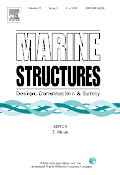
MARINE STRUCTURES
Pioneering Research in Marine StructuresMARINE STRUCTURES, published by Elsevier Science Ltd, is a premier scholarly journal that has established itself as an essential platform for the dissemination of cutting-edge research in the fields of Marine Engineering, Ocean Engineering, and Materials Science. With an impressive H-index reflecting its substantial citation impact, and boasting a Q1 ranking across several categories including Materials Science and Mechanical Engineering as of 2023, this journal is recognized globally for its contributions to advancing knowledge and innovation in marine structures. The journal covers a wide range of topics, from the design and analysis of marine structures to the latest technologies and methodologies in ocean engineering, making it invaluable for researchers, professionals, and students alike. As the journal continues to publish high-quality articles that explore contemporary challenges and opportunities within the marine domain, it serves as a catalyst for collaboration and knowledge exchange among academia and industry. Researchers are encouraged to submit their original works and benefit from the rigorous peer-review process that ensures the quality and reliability of published content. MARINE STRUCTURES is not currently an open access journal, providing a subscription-based model that facilitates access to its authoritative body of knowledge.
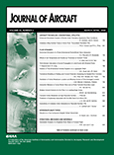
JOURNAL OF AIRCRAFT
Pioneering Research in Aircraft Engineering.JOURNAL OF AIRCRAFT, published by the American Institute of Aeronautics and Astronautics, stands at the forefront of aerospace engineering research, serving as a critical resource for researchers, professionals, and students in the field. With a proud publication history dating back to 1964 and continuing through 2024, the journal has established itself as a leading forum for innovative studies and advancements in aircraft design, technology, and utilization. Notably, it holds a prestigious Q1 ranking in Aerospace Engineering and is positioned at the 75th percentile among its peers. As a non-open access publication, it offers a subscription-based model, ensuring high-quality content disseminated to a discerning audience. The ISSN 0021-8669 and E-ISSN 1533-3868 provide easy reference for those seeking to engage with pioneering research in aviation and aircraft systems. Researchers and practitioners alike will find valuable insights and comprehensive analyses in this esteemed journal that continually shapes the development of the aerospace industry.
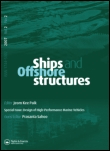
Ships and Offshore Structures
Navigating the Future of Marine EngineeringShips and Offshore Structures, published by Taylor & Francis Ltd, is a premier academic journal dedicated to advancing research in the fields of mechanical and ocean engineering. With an esteemed ISSN of 1744-5302 and an E-ISSN of 1754-212X, this journal has established a strong reputation, reflected in its Q2 ranking in both the Mechanical Engineering and Ocean Engineering categories, as well as its impressive Scopus rankings. The journal provides a platform for the publication of high-quality, peer-reviewed articles that address innovative design, construction, and operational challenges faced in the maritime and offshore industries. Although the journal does not currently offer open access, its accessibility through institutional subscriptions ensures that it remains a valuable resource for researchers, professionals, and students alike. By fostering interdisciplinary dialogue and disseminating cutting-edge research, Ships and Offshore Structures plays a crucial role in shaping the future of marine technology and engineering practices on a global scale.